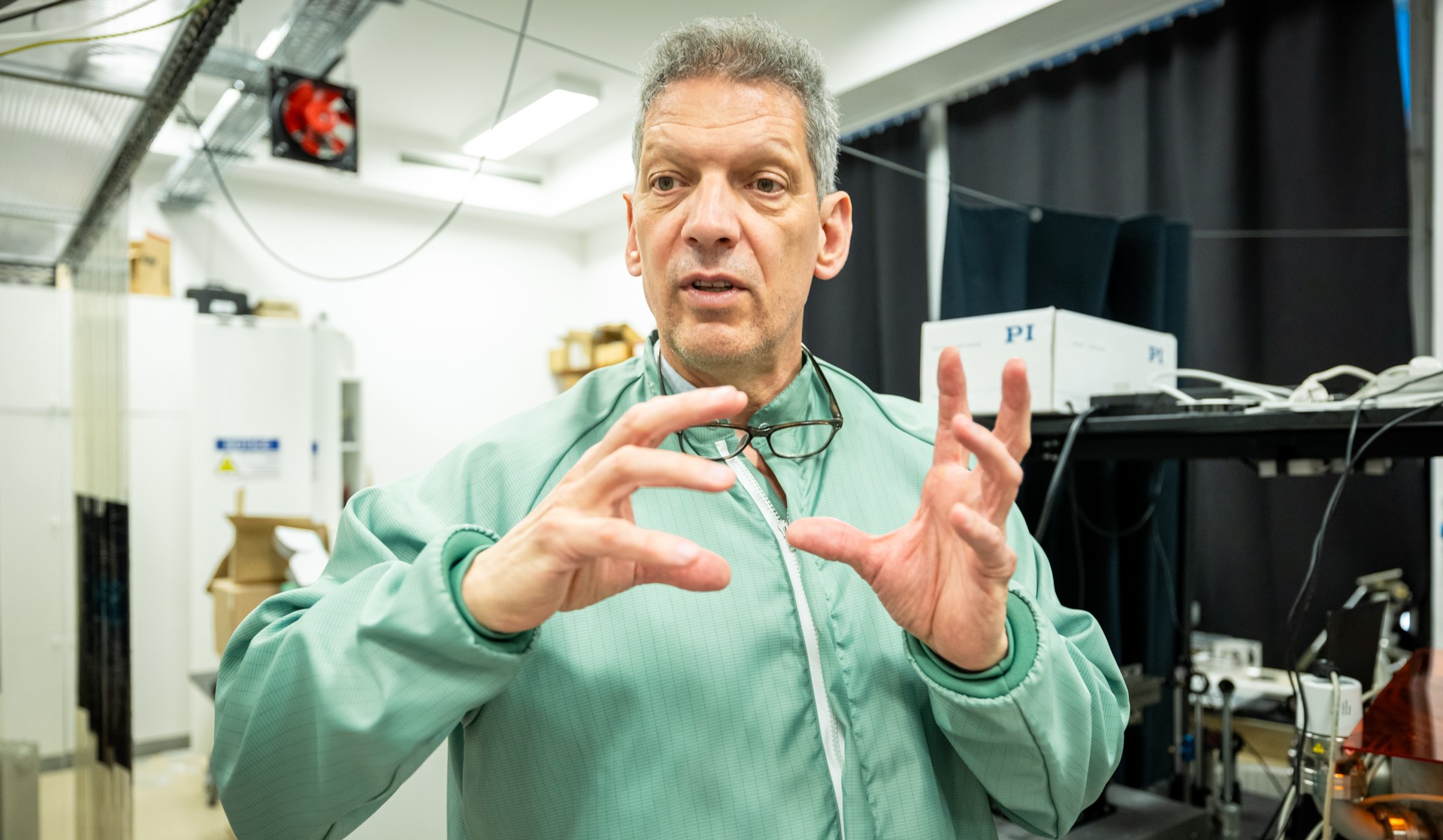
The University of Szeged’s TeWaTi Laser Research Group, led by Dr. Károly Osvay, and the Radiooncology Research Group, headed by Prof. Dr. Katalin Hideghéty, are blazing new trails in the world of science. Working together, they are contributing to the development of a groundbreaking next-generation laser-plasma accelerated free-electron laser, as part of a project connected to the prestigious EuPRAXIA consortium (European Plasma Research Accelerator with Excellence in Applications).
The EuPRAXIA consortium recently announced its decision to designate the ELI Beamlines facility in the Czech Republic – part of the ELI-ERIC research infrastructure – as the future site for its planned laser-driven plasma-based electron accelerator. EuPRAXIA is included in the 2021 Roadmap of the European Strategy Forum on Research Infrastructures (ESFRI) and aims to pioneer the development of compact, high-performance electron accelerators using laser- and ion-driven plasma acceleration technologies.
In response to our question, laser physicist Dr. Károly Osvay explained that free-electron lasers – which, despite their name, are not classical lasers but devices that emit laser-like light – accelerate electrons during operation. These particles are then forced to oscillate back and forth in modulators. As electrons travel along a wave-shaped trajectory and change direction, they emit high-frequency electromagnetic radiation in the form of soft X-rays. This phenomenon is similar to what occurs in synchrotrons, where electrons circulate and accelerate within a closed loop, emitting radiation with every turn.
Around 30,000 particle accelerators of various sizes are currently in operation worldwide, most of them being electron accelerators used in industry for materials testing. In particular, smaller particle accelerators play an important role in a range of applications, including ion implanters for semiconductor manufacturing, particle therapy for cancer treatment, radioisotope production for medical diagnostics, and mass spectrometers for measuring rare isotopes.
Dr. Károly Osvay explained that free-electron lasers are used in a new generation of large-scale research facilities that produce electromagnetic radiation – building on earlier technologies such as synchrotrons. Within this field, plasma-based electron acceleration is considered a particularly innovative method. In this approach, plasma – a state of matter formed by charged particles – can be created using either ions or lasers. The plasma-based accelerator for the EuPRAXIA project is already under construction at the INFN (National Institute for Nuclear Physics) research center in Frascati, Italy, while for the laser-based acceleration project, the consortium has recently selected the ELI facility in Prague.
The University of Szeged participated in the preparatory phase of EuPRAXIA’s laser-plasma-based free-electron laser project with two research groups. The research group led by Dr. Katalin Hideghéty, professor at the University of Szeged’s Department of Oncotherapy, is investigating the biomedical effects of both the planned soft X-ray radiation to be produced and the radiation composed of accelerated electrons. Meanwhile, the TeWaTi Laser Research Group, led by Dr. Károly Osvay at the Department of Optics and Quantum Electronics within the Institute of Physics at the University of Szeged, is working on experimental and design tasks related to the EuPRAXIA laser intended for electron acceleration.
“This laser needs to be designed according to detailed specifications, and preliminary experiments are required to determine its possible technical parameters and related challenges,” said Dr. Károly Osvay about the preparatory work. “EuPRAXIA is designing a pulsed laser operating at a repetition rate of 100 Hz. As it happens, we have also built a 100 Hz laser, which we commissioned last year with support from the National Laboratory Program. The energy range we have achieved corresponds roughly to the starting energy range required for EuPRAXIA. Our laser delivers pulses of 50–60 mJ with a duration of 26 femtoseconds. In the case of EuPRAXIA, this energy level will need to be increased by a factor of 20 to 40. Our system provides a solid technical foundation for the initial development phase and for exploring possible solutions,” he added.
According to project plans, the first phase will involve the construction of a free-electron laser capable of generating soft X-ray radiation with an energy of 1 GeV, while in the second phase, a new free-electron laser with an energy of 5 GeV will be developed.
The full development of the EuPRAXIA project was carried out by a consortium of 74 scientific institutions. From Hungary, in addition to the University of Szeged, the HUN-REN Wigner Research Center for Physics and the University of Pécs participated in the project. Researchers at the University of Pécs contributed their expertise in the study of terahertz waves, while the Wigner Research Center for Physics supported the project with theoretical simulations and by providing data storage and processing capacity.
Original Hungarian article by Sándor Panek
Feature photo: Dr. Károly Osvay, Head of the TeWaTi Laser Research Group at the Institute of Optics and Quantum Electronics of the Faculty of Science and Informatics
Photo: Ádám Kovács-Jerney

